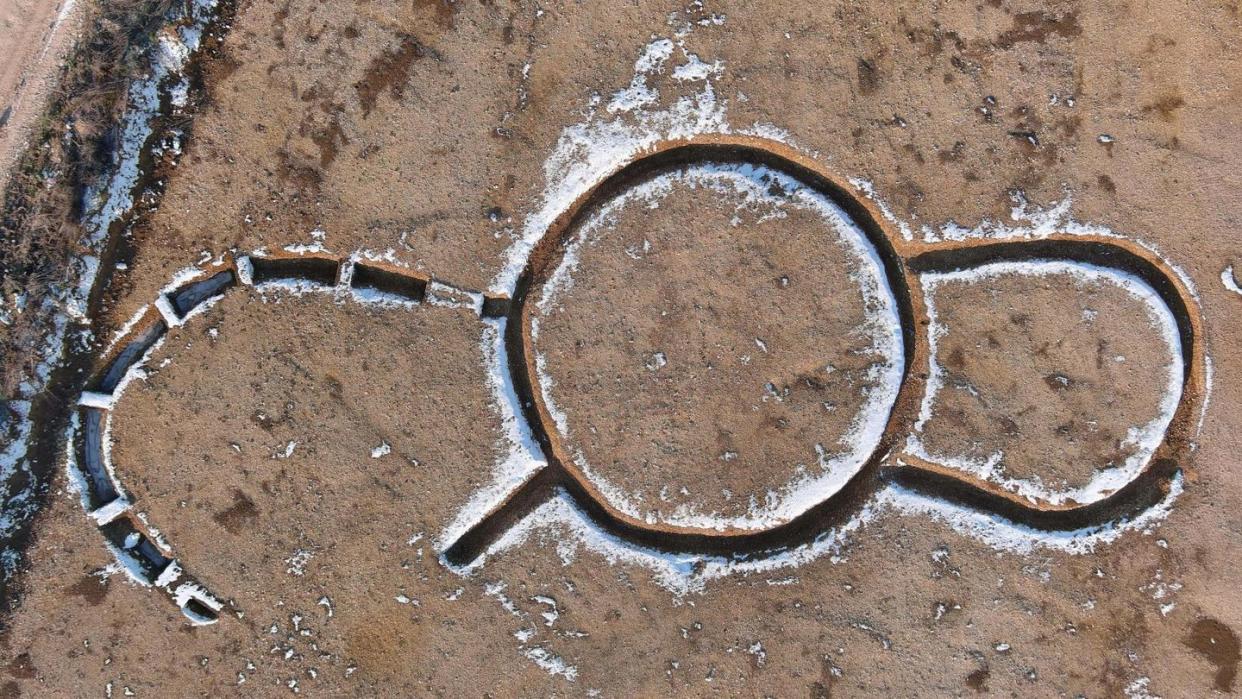Archaeologists Discovered an ‘Unprecedented’ Ancient Monument That Could Rewrite History

An archaeological find revealed in eastern France offers a never-seen-before mix of enclosures.
The site was in use across at least three distinct time periods.
Linked in part to burials, researchers hope further study reveals more about the site’s dating and purpose.
As if one ancient circular enclosure wasn’t enough to evoke intrigue at an archaeological find in Eastern France, three interconnected enclosures raised the bar.
In what the French National Institute for Preventive Archaeological Research (Inrap) is calling an “unprecedented” discovery in Marliens, France, near Dijon, excavations revealed a series of occupations on one site spanning from the Neolithic period to the First Iron Age.
The oldest occupation features a monument with three interlocking enclosures. The center section offers a circular enclosure 36 feet in diameter, the largest in the bunch. To the north a smaller 26-foot-long horseshoe-shaped enclosure connects directly to the main center piece. To the south, a circular design remains open on one side, but still ties to the main circle. The team believes all three structures are linked together in both positioning and dating and that a gravel layer found on the two side enclosures suggests a fence was also present.
“This type of monument seems unprecedented and currently no comparison has been possible,” the research team says in a statement. A bundle of artifacts—including seven flint arrowheads, two archer’s bracers, a flint lighter, and a copper alloy dagger—discovered in the site’s ditches correspond to cut flints, suggesting attribution to the Neolithic period, potentially as far back as 10,000 BC to 2,200 BC. Radiocarbon analytics is planned to help determine exact dating.
The team located an armband with traces of iron oxide tied to pyrite, indicating it could have been used to light fires. These objects often accompany a burial, but the team couldn’t make that conclusion just yet in this case.
“Analyses of the composition of the copper alloy of the dagger should make it possible to establish its origin and provide us with information on commercial exchanges at that time,” the team writes.
In another location on the site, the team dates five circular enclosures—four open and one closed across a 64,000 square foot plain—between 1500 BC and 1300 BC. The remains of burials and a funeral pyre were found in the ditches of the largest enclosure, although the acidity of the soil didn’t allow the preservation of unburned bones, so the team was not able to find a complete burial. Dating based on five copper alloy pins, a necklace with 40 amber beads, and rare ceramic shards confirms the timing.
A First Iron Age occupation is also nearby, about 1,300 feet from the plain, this with urns and burial ornaments. Early Bronze Age wells sit nearby. An analysis of the clay layers at the bottom of the wells may provide information on the natural environment and landscape of the valley during the Bronze Age.
The team believes that with the analytics underway on the objects found at the site, combined with paleo-environmental studies, they will be able to “propose a scenario of the evolution of this territory over the ages.”
You Might Also Like
